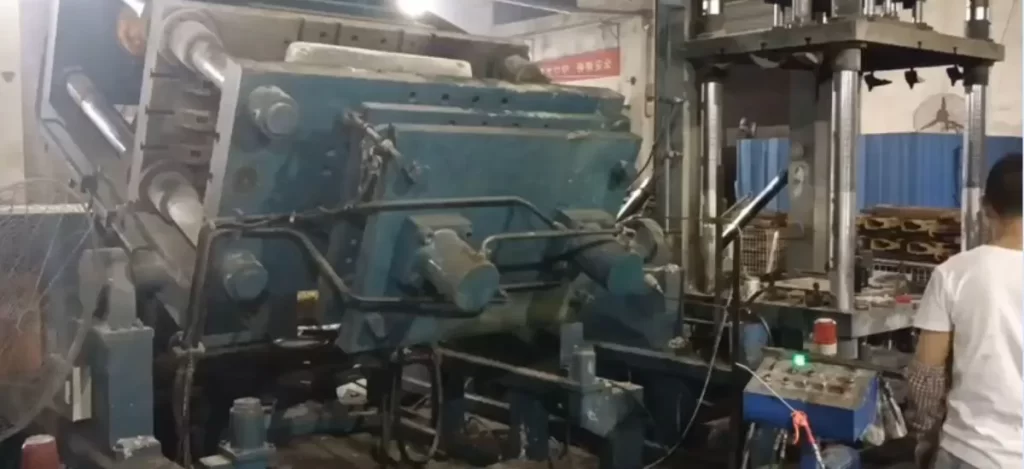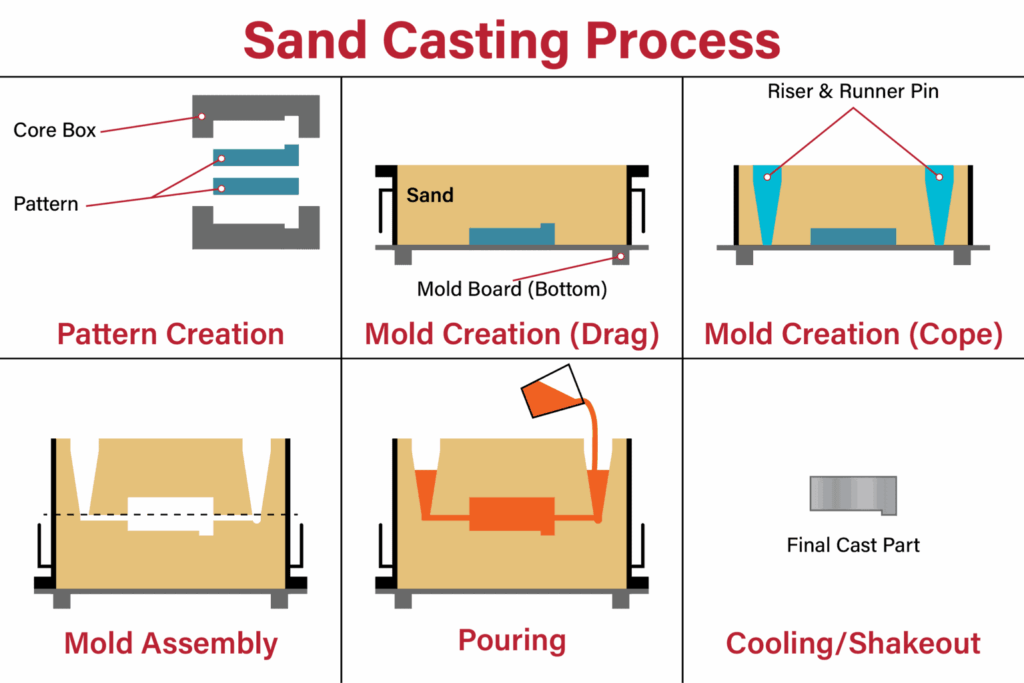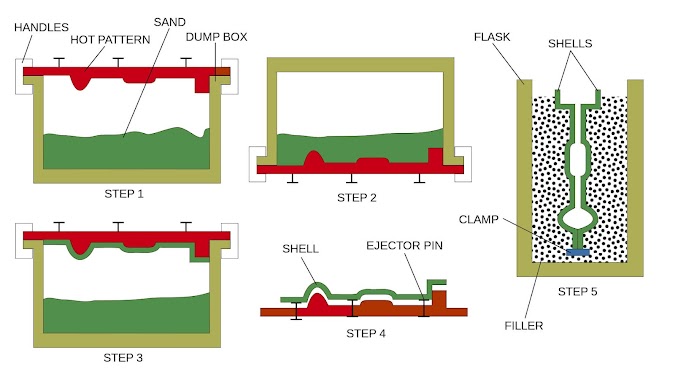Gravity casting is one of the most widespread metal casting processes that uses the force of gravity to fill a mould with molten metal. Gravity casting is not under the influence of any force or vacuum in forcing the metal into the mould unlike other pressure-based casting methods. The technique is favoured because it is simple, easy to use, and capable of producing high-quality metal components with complex geometries. This is a comprehensive introduction to gravity casting, its principles, process, advantages, disadvantages, applications, and recent advances.
At My Design Minds, we offer custom gravity casting services in Delhi NCR and India, catering to clients worldwide looking to outsource precision gravity casting. Gravity casting is one of the most efficient metal casting methods that uses gravity to fill moulds with molten metal, producing high-quality, complex metal components.

Principles of Gravity Casting
Gravity casting leads the pack, which involved pouring of liquid metal into a previously formed mould where gravity pulls the metal downward to flow and fill the cavity. Mould may be made of sand, metal, or ceramic materials depending on the kind of properties the product is to possess and the metal to be cast.
Process of Gravity Casting
Mould Preparation
The initial step is the production of a mould, either fixed (metal moulds) or disposable (sand or ceramic moulds). The mould is constructed to the same dimensions as the finished component, in addition to any other cores needed for hollow products.
Melting the Metal
The metal or alloy chosen is being heated in a furnace up to the molten stage. Aluminium, copper, magnesium, and their alloys are being used for gravity casting among the metals widely used. Aluminium, copper, magnesium, and their alloys are widely used in gravity die casting for automotive and aerospace applications.
We commonly offer aluminium gravity casting for automotive components and aerospace brackets for improved durability and weight reduction.
Pouring
The metal is being poured in the mould from the molten stage by a gating system. Gravity draws the metal to flow and occupy the complete area of the mould cavity.
The metal solidifies and cools within the mould. It may be regulated to regulate the rate of cooling in an effort to regulate the microstructure and properties of the resulting casting.
Mould Removal and Finishing
Barely on solidification, the casting is unmoulded. Expendable moulds are stripped off, while permanent moulds are reusable. The casting may be trimmed, machined, heat-treated, or surface finished.
Gravity Casting Categories/Types
Gravity Die Casting for High-Volume Production (Permanent Mould Casting)
a) Uses reusable metal moulds (typically cast iron or steel).
b) Ideal for production of medium to high volumes.
c) Provides good dimensional accuracy and surface finish in the cast component.
Sand Casting for Complex Metal Components

- Uses expendable sand moulds.
- Extremely versatile and cost-effective for low to medium production volumes.
- Ideally suited for large or complex shapes.
Shell Mould Casting for High Surface Finish Components

- A type of sand casting that uses a shell of sand coated with resin.
- Offers improved surface finish and accuracy than traditional sand casting.
Benefits of Gravity Casting
Simplicity: Simple process with fewer pieces of equipment and setup requirements.
Cost-Efficiency: Lower tooling and operating expenses compared to pressure-casting processes.
Material Flexibility: Can be employed with a wide variety of metals and alloys.
Good Mechanical Properties: Densified, high-strength parts with lower porosity than in some processes.
Dimensional Accuracy: Especially with gravity die casting, parts can be extremely accurate with even surfaces.
Scalability: Large and small production run capability.
These advantages make gravity casting services in India an attractive option for companies seeking cost-effective metal casting outsourcing solutions.
Limitations of Gravity Casting
Lower Production Rates: Cool-down and solidification take longer compared to high-pressure casting.
Less Capacity for Thin Walls: Gravity by itself cannot fill extremely thin or complex sections adequately.
Labour-Intensive: Pouring and handling normally involve skilled operators, especially for complex moulds.
Defect Risk: Defects such as incomplete filling, cold shuts, or inclusions can occur if poorly managed.
Application of Gravity Casting
Gravity casting is used across a broad spectrum of industries due to its flexibility and consistency. Uses include:
Automotive: Engine blocks, cylinder heads, transmission cases, wheels.
Aerospace: Structural components, cases, brackets.
Industrial Machinery: Pump casings, valve cases, gearboxes.
Consumer Products: Hardware, lighting, cooking appliances.
Art and Sculpture: Statues, decorations, plaques.
Recent Advancements
Modern gravity die casting services in India now include automation and CAD simulations, helping global companies outsource gravity casting projects with improved efficiency and quality.
New technology has assisted contemporary gravity casting with:
Computer-Aided Design (CAD): More sophisticated mould design and simulation to produce more quality and less defect.
Improved Alloys: Improved materials with improved properties.
Process Automation: Automatically casted and treated moulds for greater consistency and safety.
Improved Mould Materials: More durable and accurate moulds.
Conclusion
Gravity casting remains a vital metalworking operation, appreciated for its balance of simplicity, flexibility, and perfection. Though overshadowed by more advanced technologies like high-pressure die casting, its built-in advantages promise to maintain its usefulness in the manufacture of a wide range of metal components. Through the incorporation of more recent technology and materials, gravity casting continues to evolve and address the needs of the modern industry.
